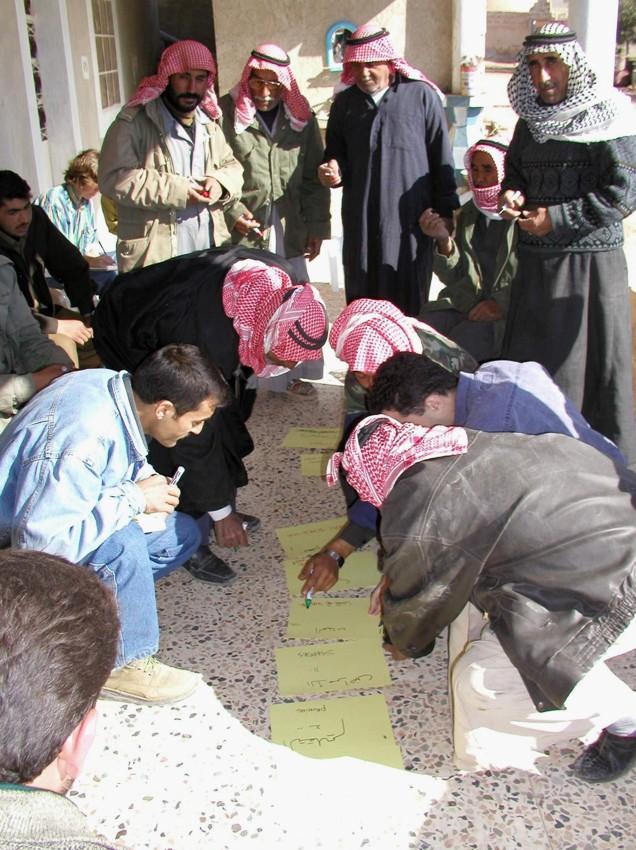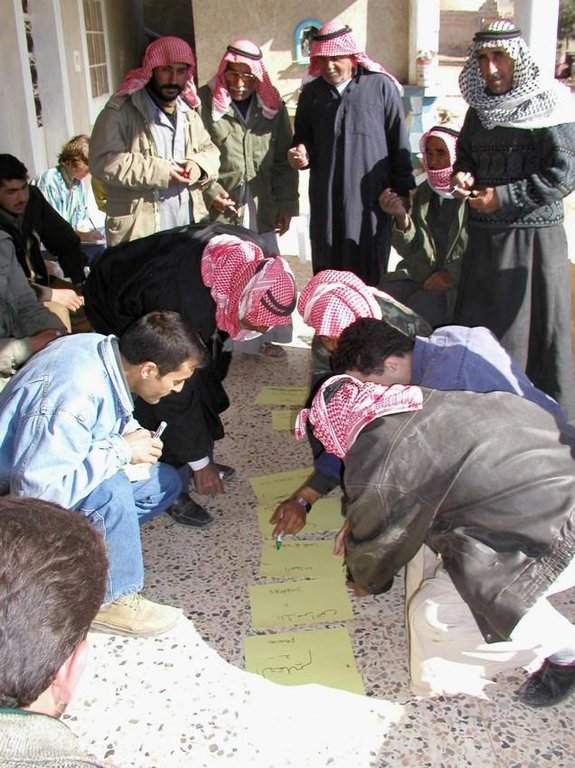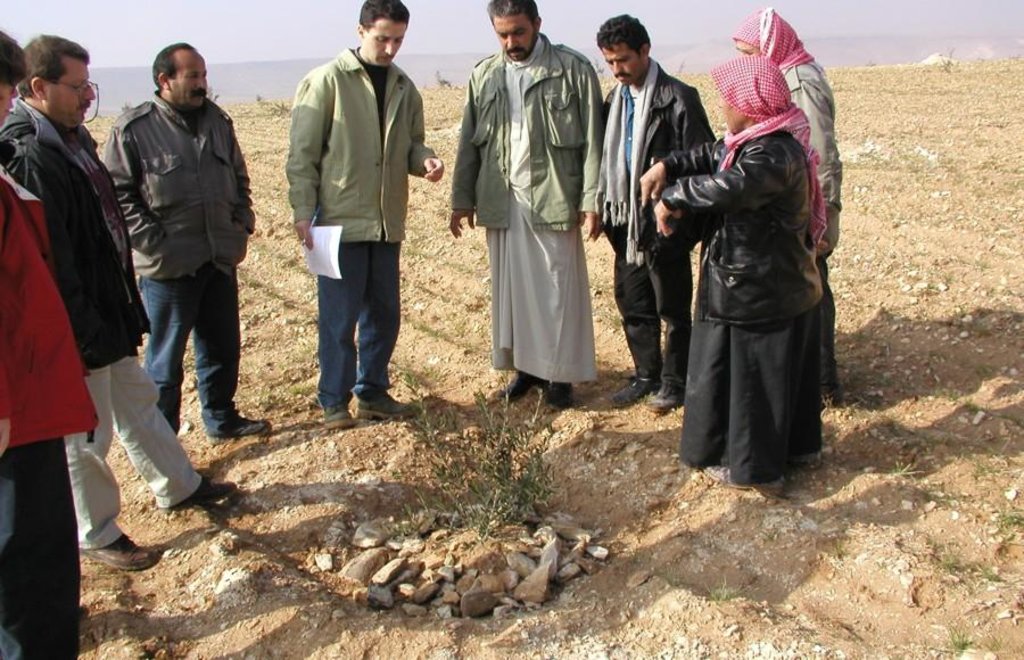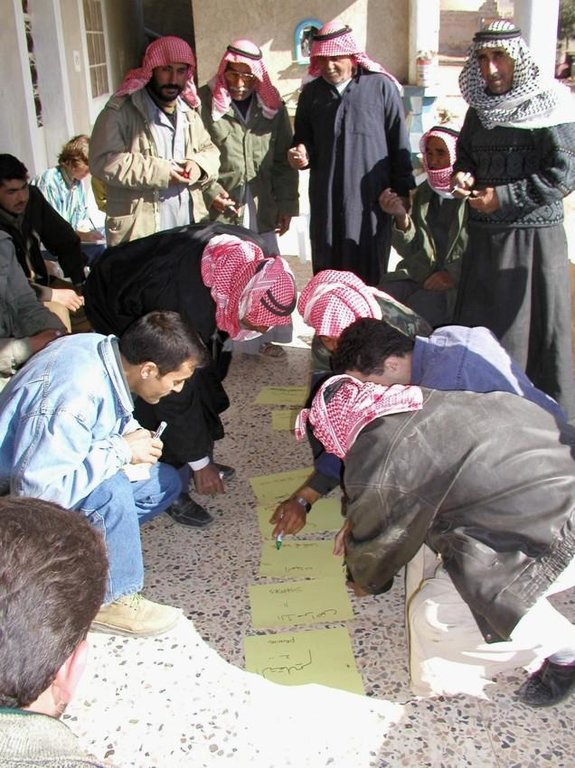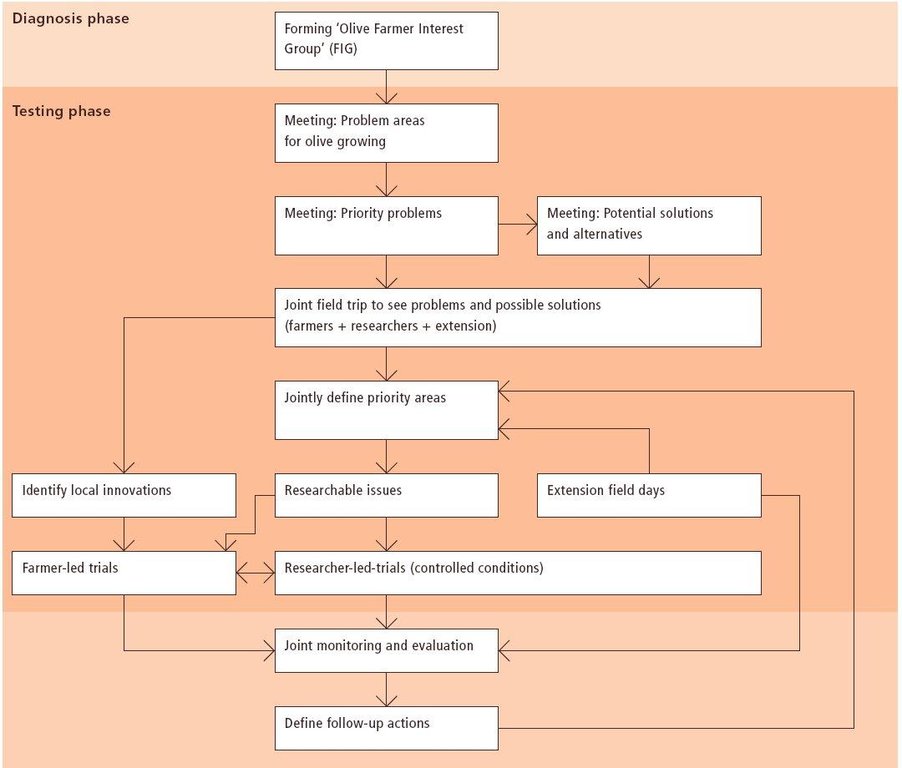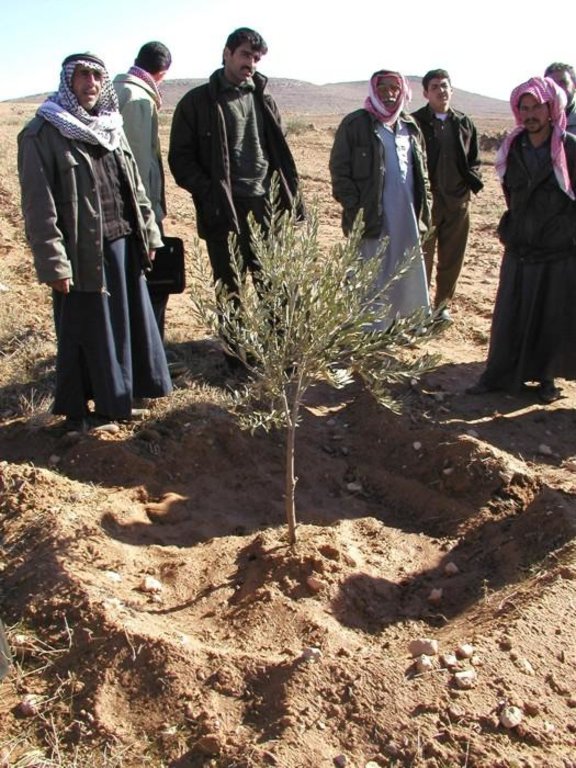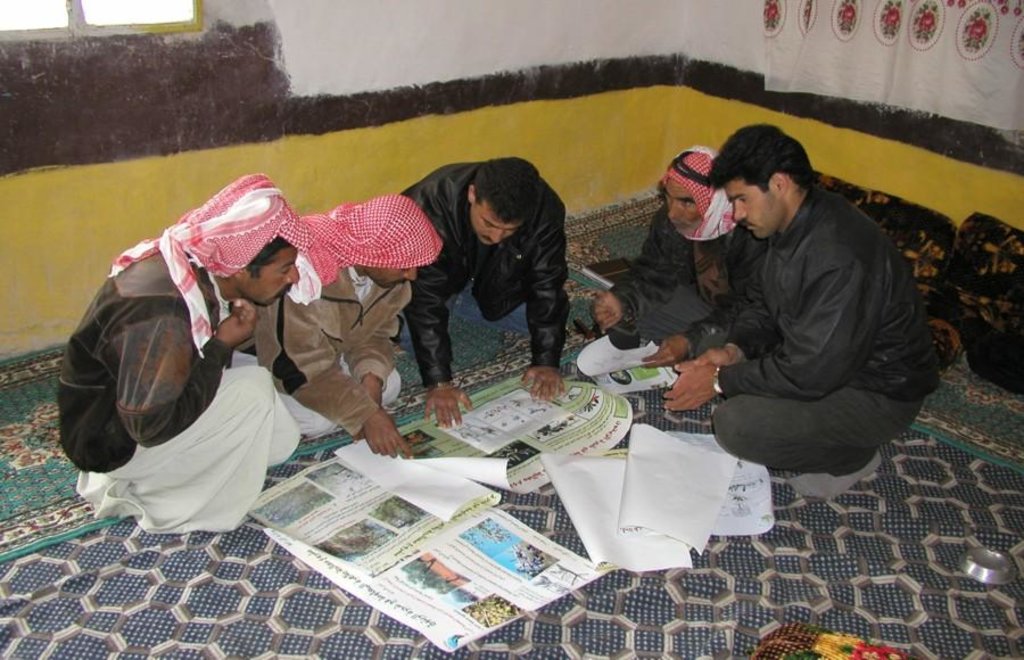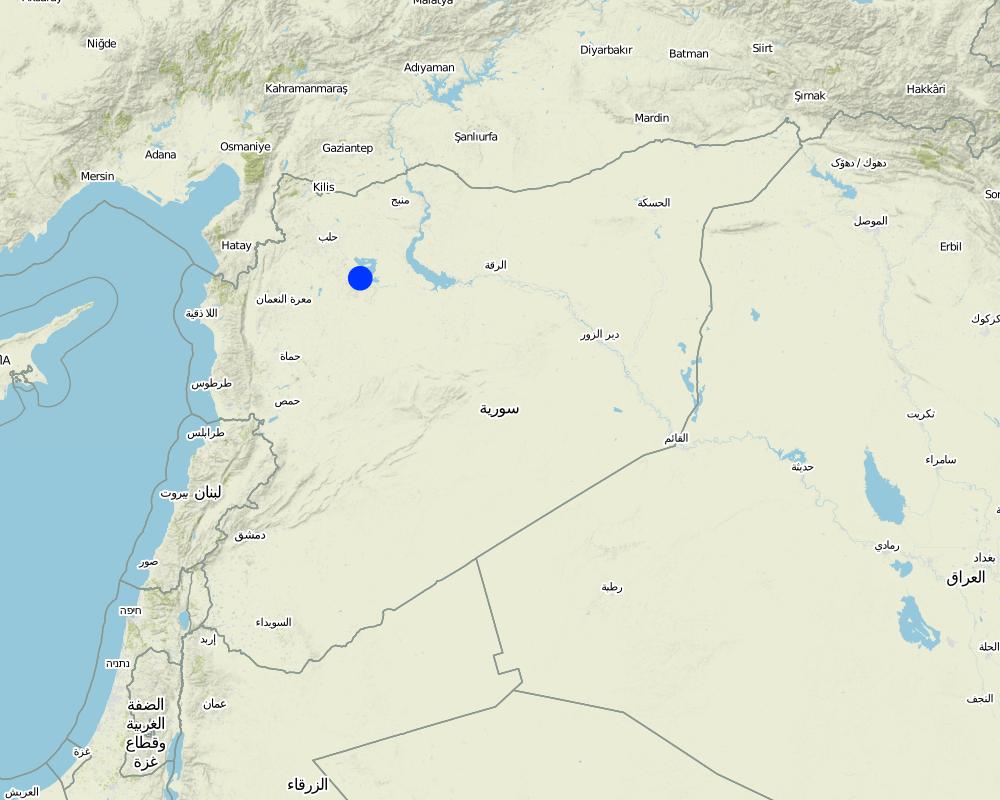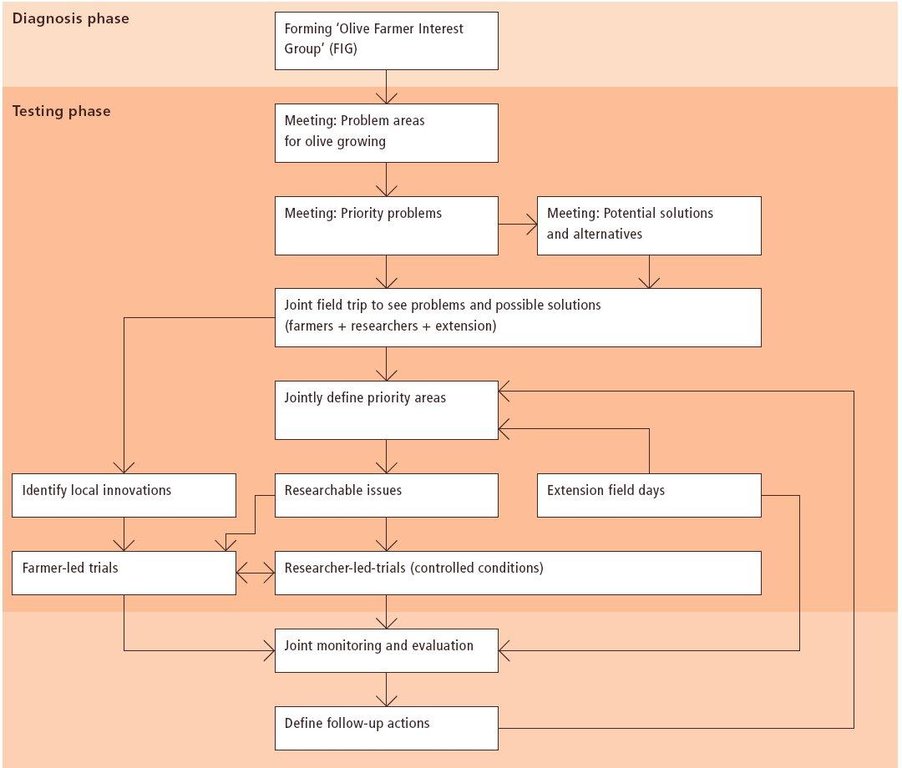Participatory technology development [Сирийн Арабын Бүгд Найрамдах Улс]
- Шинийг нээх:
- Шинэчлэх:
- Мэдээлэл цуглуулсан: Francis Turkelboom
- Редактор: –
- Хянагчид: David Streiff, Deborah Niggli
approaches_2631 - Сирийн Арабын Бүгд Найрамдах Улс
Бүлгүүдийг үзэх
Бүгдийг харуулах Бүгдийг хаах1. Ерөнхий мэдээлэл
1.2 Арга барилыг баримтжуулах болон үнэлгээ хийхэд оролцсон хүн эсвэл байгууллагын холбоо барих хаяг
ГТМ мэргэжилтэн :
Tubeileh Ashraf
A.Tubeileh@cgiar.org
Сирийн Арабын Бүгд Найрамдах Улс
ГТМ мэргэжилтэн :
Bruggeman Adriana
The Cyprus Institute (CyI)
Арга барилыг баримтжуулах/үнэлэх ажилд дэмжлэг үзүүлсэн төслийн нэр (шаардлагатай бол)
Book project: where the land is greener - Case Studies and Analysis of Soil and Water Conservation Initiatives Worldwide (where the land is greener)Арга барилыг баримтжуулах/үнэлэх ажилд дэмжлэг үзүүлсэн байгууллага(ууд)-ын нэр (шаардлагатай бол)
The Cyprus Institute (The Cyprus Institute) - Кипр1.3 WOCAT-аар баримтжуулсан өгөгдлийг ашиглахтай холбоотой нөхцөл
Эмхэтгэгч болон гол мэдээлэгч хүн(хүмүүс) WOCAT аргачлалаар баримтжуулсан мэдээллийг ашиглахтай холбоотой нөхцлийг хүлээн зөвшөөрсөн.
Тийм
1.4 ГТМ-ийн технологийн асуулгын(д) суурь мэдээлэл(д)
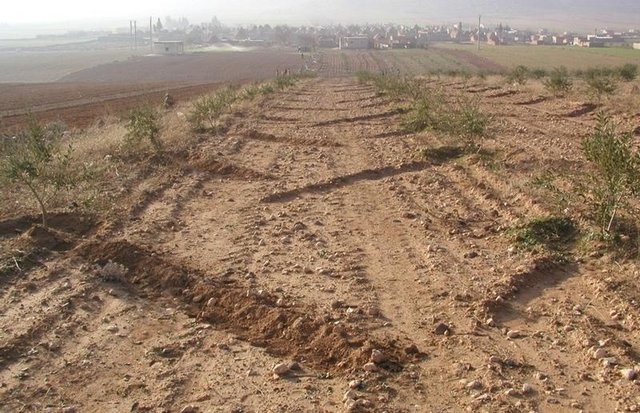
Furrow-enhanced runoff harvesting for olives [Сирийн Арабын Бүгд Найрамдах Улс]
Runoff harvesting through annually constructed V-shaped microcatchments, enhanced by downslope ploughing.
- Мэдээлэл цуглуулсан: Francis Turkelboom
2. ГТМ Арга барилын тодорхойлолт
2.1 Арга барилын товч тодорхойлолт
Participatory technology development, through close researcher-farmer interaction, for sustainable land management of olive orchards in dry marginal areas.
2.2 Арга барилын дэлгэрэнгүй тодорхойлолт
Арга барилын дэлгэрэнгүй тодорхойлолт :
Aims / objectives: The purpose of participatory technology development is to gain from the synergy between indigenous knowledge and scientific expertise. The specific objective in this case was to develop and test water and land management techniques in order to sustainably improve olive production in a semi-arid area, while ensuring that the techniques were well adapted to local farming practices. The approach consists of group meetings, joint field trips, identification of local innovations, extension days, monitoring of farmer practices, and researcher-controlled experiments. The approach consists of a cycle with three major stages: a diagnostic phase, a testing phase, followed by monitoring and evaluation. In this case study, farmers were invited based on their interest in growing olives. Participation throughout the learning cycle was completely voluntary: no material or financial incentives were used (although they expected them in the beginning of the process). The role of farmers was to identify priority problems and potential solutions, to test new technologies on their farms, and to evaluate their suitability. Farmers observed the research experiment with water harvesting, and then adapted the technology to their needs. As shown, they built V-shaped bunds around their olive trees to capture rainwater runoff, but - contrary to the researchers??? suggestion - they continued to plough the olive orchards, as this is their standard weed control practice. Weeds attract sheep, lead to fires and compete for water with the olives. This simple runoff harvesting system is well adapted to farmers??? objectives, and their modification -the up-and-down slope furrows created through ploughing - actually serves to increase the efficiency of the water harvesting. The system is now being monitored by researchers to assess its technical and economic efficiency.
Methods: Improved farmer-researcher interaction helps farmers learn about a useful basic technique from researchers, while researchers learn in turn about potential improvements to the technology from local innovators. A community facilitator of ICARDA (International Centre for Agricultural Research in Dry Areas) facilitated the group discussions, and the researchers were asked to be open-minded to new approaches while conducting and monitoring field trials. The approach was tested by an interdisciplinary team of ICARDA as part of the ???Khanasser Valley Integrated Research Site???. This project aimed to develop local-adapted options for agriculture in dry marginal areas alongside a generally applicable integrated approach for sustainable land management in these zones.
2.3 Арга барилын зурагууд
2.5 Арга барил нэвтрүүлсэн улс орон / бүс нутаг / байршил
Улс :
Сирийн Арабын Бүгд Найрамдах Улс
Улс/аймаг/сум:
Khanasser Valley
Байршлын дэлгэрэнгүй тодорхойлолт:
NW Syria
Map
×2.7 Арга барилын төрөл
- төсөл / хөтөлбөр дээр үндэслэсэн
2.8 Арга барилын үндсэн зорилго, зорилтууд
- design, test and disseminate alternative technologies adapted to local conditions - strengthen local knowledge of SWC measures - strengthen joint learning by farmers and researchers
The SLM Approach addressed the following problems: The lack of appropriate ways to develop sustainable technologies to remedy loss of runoff water and poor olive growth -in the context of low-input agriculture on gentle undulating land in water scarce areas with an absence of soil conservation measures.
2.9 Арга барилын хүрээнд хэрэгжсэн Технологи/Технологиудад дэмжсэн эсвэл саад учруулсан нөхцлүүд
санхүүгийн нөөц, үйлчилгээний хүртээмж / боломж
- Хазаарлалт
Water harvesting is considered expensive due to labour cost.
Treatment through the SLM Approach: Identification of a low-cost water harvesting measure, which can be implemented during the off-season. Cost-benefit analysis.
ГТМ-ийн талаарх мэдлэг, техникийн дэмжлэг авах боломж
- Хазаарлалт
Difficulty in tilling the land when water harvesting structures are in place.
Treatment through the SLM Approach: Integrating local innovations into the water harvesting system.
Бусад
- Хазаарлалт
Uncertainty about appropriate size of micro-catchment area. Uncertainty about the amount of water harvested. Lack of technical expertise for olive crop husbandry in dry areas.
Treatment through the SLM Approach: Researcher-controlled research and carry out farmer field days, desseminate and elaborate extension leaflets as a help.
3. Оролцогч талуудын оролцоо ба үүргүүд
3.1 Арга барилд оролцогч талууд болон тэдгээрийн үүргүүд
- Орон нутгийн газар ашиглагч / орон нутгийн иргэд
Mainly men were involved, as most activities in olive orchards are managed by men. In addition, culturally bound gender segregation in public makes it difficult to organise gender-mixed meetings. Therefore, separate meetings were organised for women. In the case of one household, the de facto partner was a woman who takes most of the orchard-related decisions and does the work herself.
- researchers
3.2 Арга барилын янз бүрийн үе шатанд орон нутгийн газар ашиглагчид / бүлэглэлүүдийг татан оролцуулах
| Орон нутгийн газар ашиглагч / орон нутгийн иргэдийн оролцоо | Хэн оролцсоныг тодорхойлж, үйл ажиллагааг тайлбарлана уу | |
|---|---|---|
| санаачлага/идэвхжүүлэлт | идэвхигүй | public meetings |
| Төлөвлөгөө | интерактив | public meetings |
| Хэрэгжилт | интерактив | completely conducted by land-users |
| Мониторинг/ үнэлгээ | интерактив | interviews/questionnaires, public meetings; |
| Research | интерактив | on-farm; farmer experiments and controlled on-farm experiments |
3.3 Диаграм (хэрэв боломжтой бол)
3.4 ГТМ-ийн технологи/технологиуд сонгох шийдвэр
Хэрэгжүүлэх Технологи/Технологиудын сонголтыг хийж шийдвэр гаргасан хүнийг тодорхойлно уу:
- ГТМ-ийн мэргэжилтнүүдийн дэмжлэгтэйгээр, голчлон газар ашиглагчид
Тайлбар :
Decisions on the method of implementing the SLM Technology were made by mainly by land users supported by SLM specialists
4. Техникийн дэмжлэг, чадавхи бүрдүүлэх, мэдлэгийн менежмент
4.1 Чадавхи бэхжүүлэх/сургалт
Газар эзэмшигчид / бусад оролцогч талуудад сургалт явуулсан уу?
Тийм
Сургалтын хэлбэр :
- Ажил дээр
- фермерээс -фермер
- Олон нийтийн уулзалт
Хамрагдсан сэвдүүд:
Demand-driven training of olive husbandry techniques (eg pruning, grafting, pest management)
4.2 Зөвлөх үйлчилгээ
Газар ашиглагчдад зөвлөх үйлчилгээ авах боломжтой байдаг уу?
Тийм
Зөвлөх үйлчилгээ үзүүлсэн эсэхийг тогтоо:
- Газар ашиглагчийн талбай дээр
Тодорхойлолт / тайлбар:
Farmer-to-farmer extension; Key elements: innovative farmers showed their technique to other olive farmers during farm visits
4.3 Институцийг бэхжүүлэх (байгууллагын хөгжил)
Арга барилаар дамжуулан институц байгуулагдаж эсвэл бэхжсэн үү?
- Үгүй
4.4 Мониторинг ба үнэлгээ
Мониторинг болон үнэлгээ нь арга барилын хэсэг үү?
Тийм
Тайлбар:
bio-physical aspects were regular monitored by 0 through observations; indicators: soil moisture
bio-physical aspects were regular monitored by 0 through measurements; indicators: water harvesting structures and management measures
technical aspects were regular monitored by None through observations; indicators: perceptions of the technology
socio-cultural aspects were ad hoc monitored by None through measurements; indicators: cost and benefits
economic / production aspects were ad hoc monitored by None through measurements; indicators: annual field survey using GPS
area treated aspects were regular monitored by None through measurements; indicators: annual farmer interview
no. of land users involved aspects were regular monitored by None through observations; indicators: None
There were few changes in the Approach as a result of monitoring and evaluation: There were few changes: interest in the farmers??? orchards and questions about the technology stimulated some other farmers to apply water harvesting.
4.5 Судалгаа
Судалгаа арга барилын хэсэг нь байсан уу?
Тийм
Сэдвийг тодруулна уу:
- Социологи
- Эдийн засаг/ зах зээл
- Технологи
Дэлгэрэнгүй мэдээллийг өгч, хэн судалгаа явуулсныг бичнэ үү:
Research was an important part of this approach. Technical and socio-economic topics were treated as follows: (1) Researcher-controlled on-farm experiments: this helped evaluate the impact of water harvesting design on the amount of water harvested and the olive crop response. (2) Monitoring of farmer-managed trials: to evaluate the performance of water harvesting under on-farm conditions. (3) Cos
5. Санхүүгийн болон гадаад материаллаг дэмжлэг
5.1 ГТМ-ийн Арга барилын бүрэлдэхүүн хэсгийн жилийн төсөв
Тайлбар (жнь: санхүүжилтийн гол эх үүсвэр / гол хандивлагчид):
Approach costs were met by the following donors: government (national - ICARDA, Atomic Energy Commission Syria): 10.0%; international non-government (BMZ (Germany)): 50.0%; local community / land user(s) (-): 40.0%
5.2 Газар ашиглагчдад санхүүгийн / материаллаг дэмжлэг үзүүлсэн
Технологи / технологийг хэрэгжүүлэхэд газар ашиглагчид санхүүгийн / материаллаг дэмжлэг авсан уу?
Тийм
5.3 Тодорхой зардлыг даахад чиглэсэн дэмжлэгт (хөдөлмөрийн хүчийг оролцуулаад)
Хэрэв газар ашиглагчийн хөдөлмөрийн хүч чухал байсан бол энэ нь аль хэлбэр байсан:
- сайн дурын
5.4 Кредит
Арга барилын хүрээнд ГТМ-ийн үйл ажиллагаанд зориулж зээлд хамрагдсан уу?
Үгүй
6. Нөлөөллийн дүн шинжилгээ ба дүгнэлт
6.1 Арга барилын нөлөөллүүд
Арга барил нь ГТМ-ийн технологийг хэрэгжүүлж, хадгалахад газар ашиглагчдад тусласан уу?
- Үгүй
- Тийм, бага зэрэг
- Тийм, зарим
- Тийм, их
Adoption of the furrow-enhanced runoff-water harvesting technique resulted in a concentration of scarce rainwater and nutrients in the basins around the olive trees. The consequence is a significant reduction of soil loss and runoff at the field level.
Did other land users / projects adopt the Approach?
- Үгүй
- Тийм, бага зэрэг
- Тийм, зарим
- Тийм, их
This approach is now being applied in other ICARDA-coordinated projects in the region.
6.3 Арга барилын үйл ажиллагааны тогтвортой байдал
Газар ашиглагчид арга барилаар дамжуулан хэрэгжүүлсэн арга хэмжээг тогтвортой хадгалж чадах уу (гадны дэмжлэггүйгээр)?
- Тийм
Хэрэв тийм бол яаж гэдгийг тайлбарлана уу:
The complete PTD process/learning cycle needs outsider facilitation, but lack of outsiders will not stop farmers experimenting further by themselves. In terms of the technology itself, farmers can continue independently with water harvesting structures, as the system is very simple and relatively cheap.
6.4 Арга барилын тогтвортой/давуу тал/боломжууд
| Эмхэтгэгч, бусад мэдээлэл өгсөн хүмүүсийн өнцгөөс тодорхойлсон давуу тал/боломжууд |
|---|
| Engagement of researchers with local innovators and thus interaction between scientific and indigenous knowledge (How to sustain/ enhance this strength: This approach can only be sustained if it is mainstreamed into national research and extension services.) |
| Attitude changes by researchers about farmers??? knowledge (How to sustain/ enhance this strength: Ditto.) |
| Building on local knowledge (How to sustain/ enhance this strength: Ditto.) |
| Capacity building of both land users and researchers (How to sustain/ enhance this strength: Ditto.) |
| Demand-driven technologies (How to sustain/ enhance this strength: Ditto.) |
6.5 Арга барилын дутагдалтай/сул тал/аюул болон тэдгээрийн хэрхэн даван туулах арга замууд
| Эмхэтгэгч, бусад мэдээлэл өгсөн хүмүүсийн өнцгөөс тодорхойлсон сул тал/ дутагдал/ эрсдэл | Тэдгээрийг хэрхэн даван туулах вэ? |
|---|---|
| Time demanding | Less time needed after the first experience. |
| Appropriate facilitating skills required | Mainstreaming facilitation skills. |
7. Суурь мэдээлэл болон холбоосууд
7.1 Мэдээллийн эх үүсвэр/аргууд
- Хээрийн уулзалт, судалгаа
- Газар ашиглагчтай хийсэн ярилцлага
7.2 Холбогдох бүтээлийн ишлэл
Гарчиг, зохиогч, он, ISBN:
Tubeileh A and Turkelboom F (2004) Participatory research on water and soil management with olive growers in the Khanasservan Veldhuizen L, Waters-Bayer A, Abd de Zeeuw H (1997) Developing technology with farmers:
Холбоос ба модулууд
Бүгдийг харуулах Бүгдийг хаахХолбоосууд

Furrow-enhanced runoff harvesting for olives [Сирийн Арабын Бүгд Найрамдах Улс]
Runoff harvesting through annually constructed V-shaped microcatchments, enhanced by downslope ploughing.
- Мэдээлэл цуглуулсан: Francis Turkelboom
Модулууд
Модуль байхгүй байна


